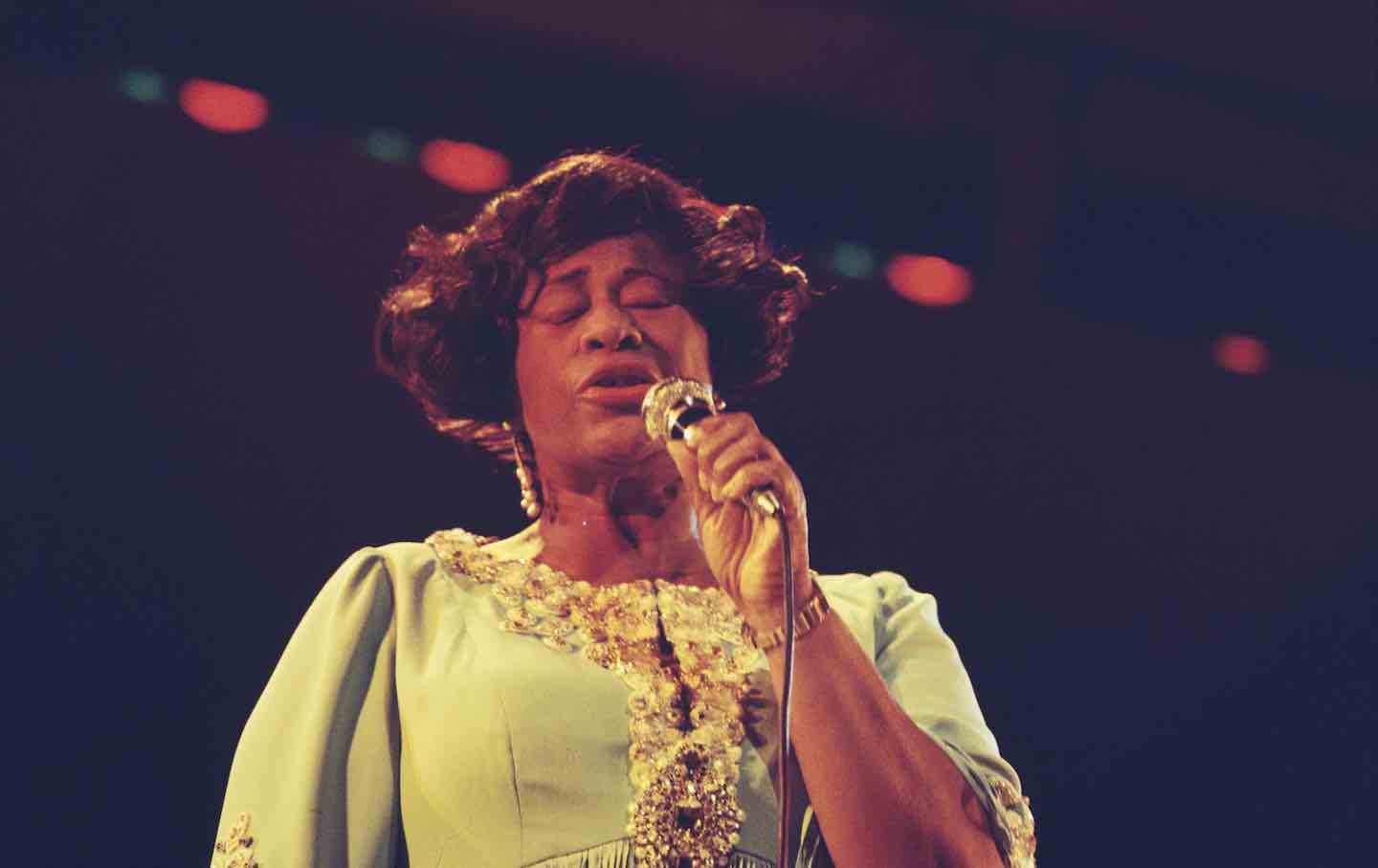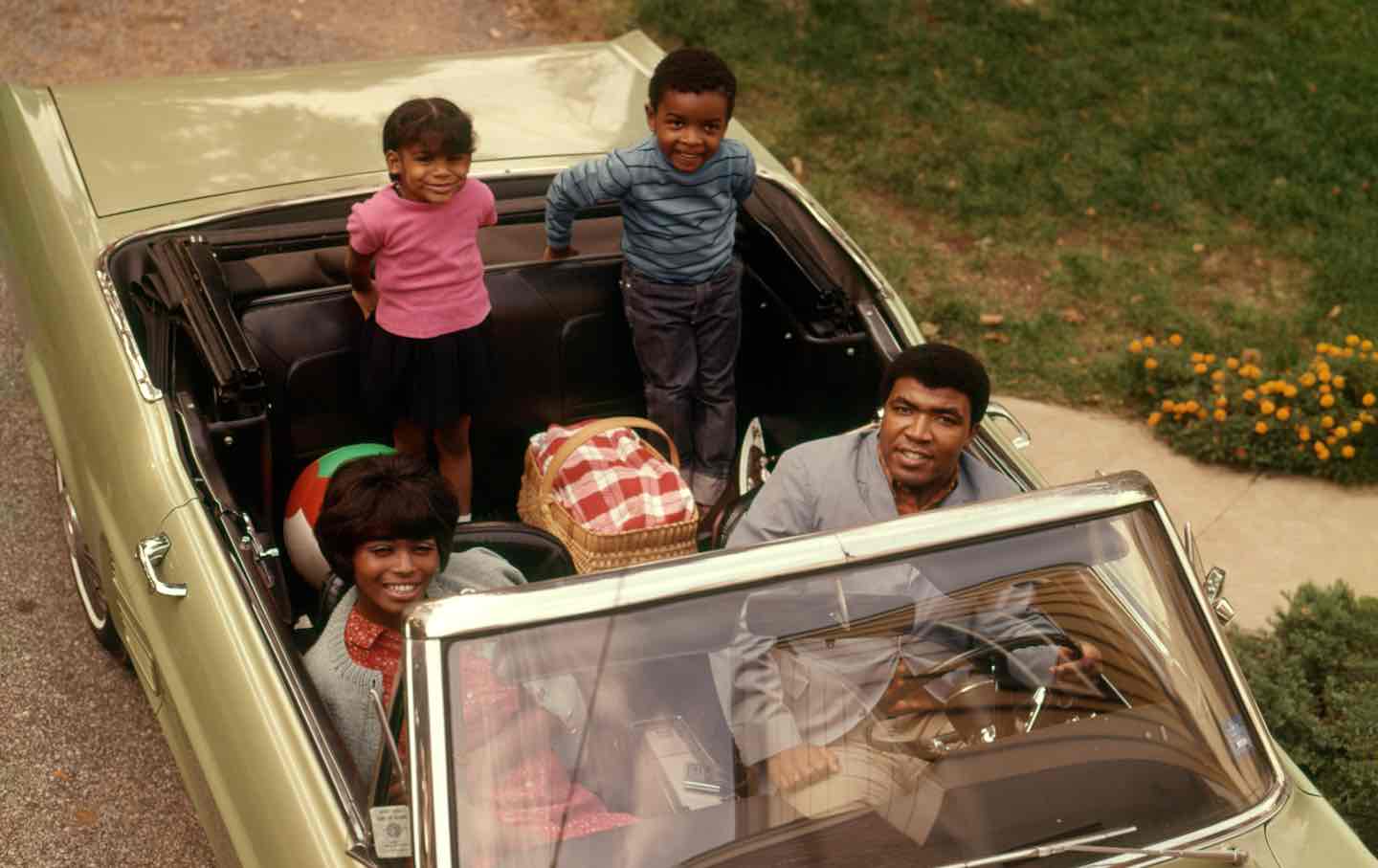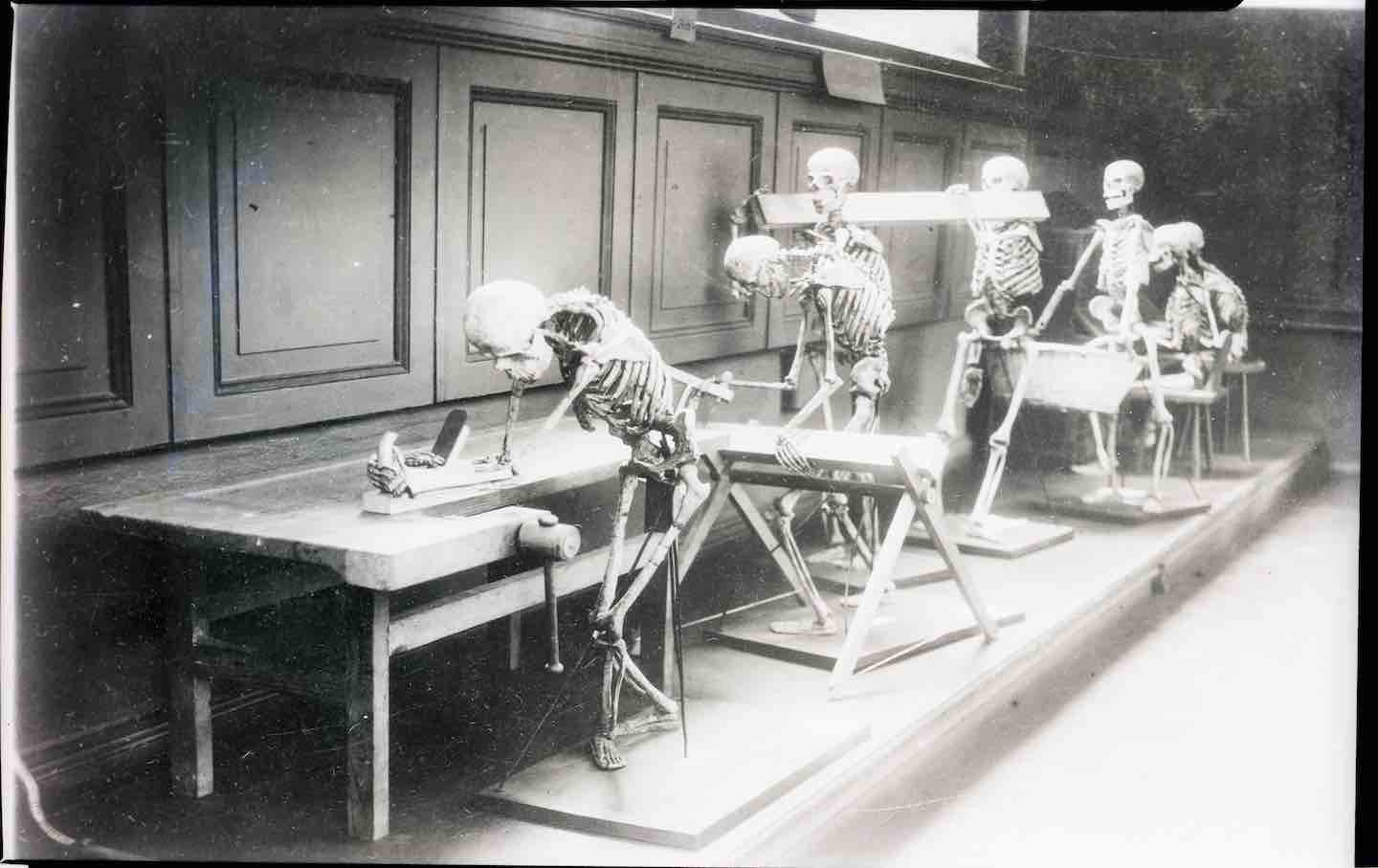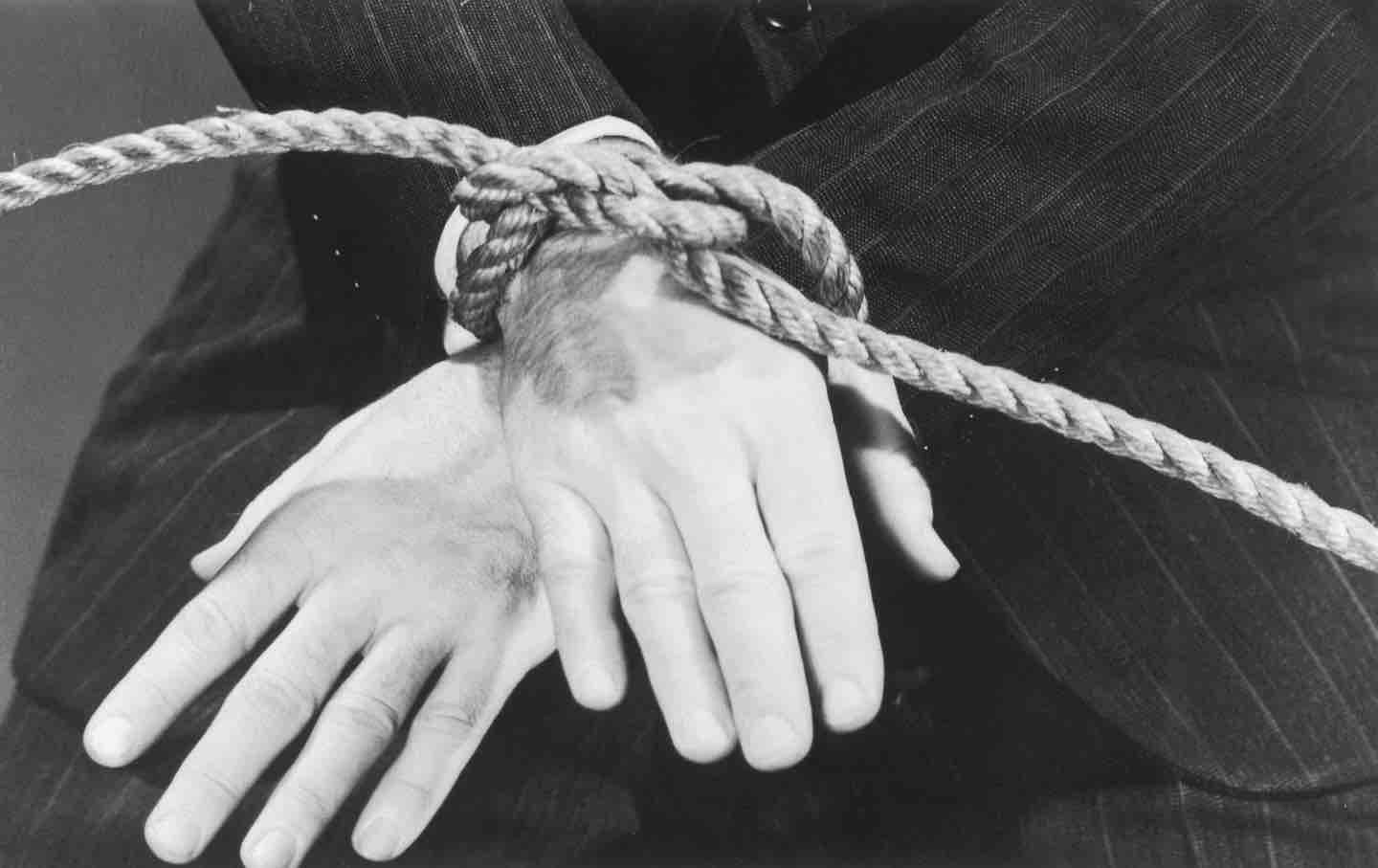The Genius of Ella Fitzgerald
She remade the American songbook in her image, uprooting the very meaning of musical performance.

Ella Fitzgerald at the Newport Jazz Festival in Newport, Rhode Island, 1970.
(Photo by David Redfern / Redferns)
Ella Fitzgerald made singing feel like thinking. Her interpretations of the Great American Songbook—taken as a whole, still its most ambitious rendering to date—are full of harmonic risk and expressive lucidity. Her exhaustive approach to improvisation, exemplified in the revelations of scat, made her a moving “music laboratory,” in Margo Jefferson’s phrase: a musician whose experiments seemed to alter the possibilities of performance.
Books in review
Becoming Ella Fitzgerald: The Jazz Singer Who Transformed American Song
Buy this bookFitzgerald was also, observers in her lifetime mused, a “lamb,” a “pretty bird,” “an innocent with the musical capacity of a sweet wizard.” She “too often sounds like a child,” the jazz critic Nat Hentoff wrote. Perhaps even more than her peers, an obsession with Fitzgerald’s appearance defined her reception. In an interview near the start of her career, a reporter for Baltimore’s Afro-American plied her about her eating habits before noting that she’d recently gained 30 pounds. Fitzgerald understood that perceptions could make or break careers. “When a girl comes up and she looks like me,” she told the same reporter, “she just can’t get a chance.”
A further line of criticism cut directly at her music: The songbook, that old American theater fare, was simply “outside Ella’s understanding.” Another critic admitted that he “sometimes wondered if she knew what the words meant.” A third agreed that she had never been a “profound interpreter of lyrics.” And a fourth: “Whatever praiseworthy [things] one may say about Miss Fitzgerald, intelligence is certainly the one quality to which her voice could never lay claim.”
The scope of this particular disparagement emerges fully in Becoming Ella Fitzgerald, a recent biography by the musicologist Judith Tick. Tick captures the breadth of Fitzgerald’s treatment by the press, particularly in Black newspapers, where she gave some of her most revealing interviews; from it emerges a portrait of the condescension Fitzgerald endured. The existence of the criticism is not new or surprising, and these floggings never derailed her career. But Tick’s book raises a range of possible answers to a question that helps register both the cultural force of Fitzgerald’s music and our evolving apprehension of her life: Why did critics fixate on her depth?
Ella Fitzgerald was born in 1917 in Virginia, though she spent her childhood in Yonkers, New York, where Black and immigrant residents of the industrialized neighborhoods were partitioned from the white Manhattan commuter class. Before she became a singer, she was a formidable teenage dancer, a practitioner of the fad moves of the late 1920s and early ’30s—the Lindy Hop, the Charleston, the Shim Sham Shimmy, the Big Apple, the Scrontch—that set the pace at Harlem’s Savoy Ballroom.
After a stint in youth detention for skipping school, Fitzgerald earned a chance to sing for the drummer Chick Webb, an inventive bandleader with whom she would spend the first four years of her professional career. Webb was an ideal collaborator, because his group was the house band at the Savoy; his rhythms shaped and took shape from popular social dance. Perhaps more than ever again in its history, jazz’s function at the time was to help dancers move, and its keenest practitioners—the dance bands who played not just jazz but Latin music, waltzes, and more—paid close attention to their counterparts. Webb had “such command of his audiences at the Savoy ballroom,” Duke Ellington later wrote, “because he was always in communication with the dancers.”
Fitzgerald became a star with Webb, writing and performing hits like “A-Tisket, A-Tasket.” She played her first gigs with him at age 17, and her rhythmic versatility won her quick acclaim. Fitzgerald was the only woman in the band: Scatting—the technique for which she became famous—was born from her desire (encouraged by Webb) to participate in the group’s after-hours jam sessions. “I felt out of place until Chick suggested I improvise on my voice,” she told an interviewer. Those four years with Webb turned out to be the last four of his short life. At the drummer’s funeral, Fitzgerald sang “My Buddy” while the rest of the band wept.
Fitzgerald led the group under her own name for several more years, trying to find her footing. In 1941, at age 24, she married a man nicknamed “Cigaret” while on the road in St. Louis. The marriage was annulled a year later. The war proved something of a slump for her career, which was managed during its first decades by Savoy Records cofounder Moe Gale and then—more famously, starting in the mid-1950s—by the impresario Norman Granz.
Granz was a force whose ends were neither merely musical nor managerial. He was the same age as Fitzgerald, and their adolescence (his in Los Angeles, hers in Harlem) saw musicians ally with the Popular Front. The labor historian Archie Green, a childhood friend of Granz’s, recalled their shared youthful enjoyment of “New Deal culture”: WPA theater, Hall Johnson’s gospel choir, reading The Nation and The Atlantic Monthly at the public library. Swing became “the preeminent musical expression of the New Deal,” as the historian David Stowe wrote in a 1994 book. The Chick Webb Orchestra played at Daily Worker–sponsored events in the late 1930s, and Fitzgerald lent her time to an artists’ committee that helped elect the Black communist Benjamin Davis to the New York City Council.
By the time Granz took over Fitzgerald’s management in the mid-1950s, they had already worked together for years on Granz’s Jazz at the Philharmonic series, a touring all-star band whose ranks on any given night might include the likes of Roy Eldridge, Oscar Peterson, and Coleman Hawkins. As the JATP tours wound down, Granz orchestrated the most celebrated recording dates of Fitzgerald’s career, the late-’50s songbook sessions where Fitzgerald breathed immortality into the by-then-ancient texts of Tin Pan Alley: the corpora of Cole Porter, Irving Berlin, the Gershwins, and Rodgers and Hart. In a primarily orchestral setting, Fitzgerald flexed the idiomatic intuition she’d developed over two decades of live performance, retooling familiar melodic phrases with panache.
Granz’s most important nonmusical contribution was getting Fitzgerald better pay, and a major element of his strategy was packaging her performances as luxury products. This altered the approach to the music itself: On the American Songbook records, he insisted that Fitzgerald sing the decorative lyrical introductions that had traditionally been omitted from earlier recordings. On an unusually drawn-out recording of “Bewitched, Bothered and Bewildered,” Fitzgerald incanted seven minutes of bawdy prayer.
Granz changed the physical medium, too. For several of the songbook albums, he replaced pictures of Fitzgerald with images by Matisse, Picasso, and Jean Dubuffet, as if to announce: “This is high art!” The three sets of liner notes for Ella Fitzgerald Sings the Cole Porter Songbook, a 32-track double album, similarly communicated the “cultural authority,” in Tick’s words, of a “perfectly calibrated package for upper-middle- and middle-class-affluent consumers listening to high-fidelity LPs on their fashionable home consoles.”
The venues presented a more significant hurdle. For years, Fitzgerald had been a jazz-club musician, but Granz was determined to get her booked at the uptown lounges and hotels frequented by the white elite—no more “Fifty-Second Street money,” as he called the low-paying gigs in midtown Manhattan. The way in was to sell Fitzgerald on the terms of respectability, which by shifting the context of the music’s production threatened to mute its radical sensibility, if not also its ambition. The new audience meant a shifting critical public, as well as a different set of social terms within which the music’s meaning and value would be negotiated.
The typical venues for Black jazz musicians, of course, posed their own set of risks: During a JATP stop in Houston not long after Granz began managing her, police fearful of a bustling desegregated show arrested Fitzgerald and several of her bandmates on trumped-up charges of gambling. (She’d been throwing dice in the green room with Dizzy Gillespie.) The white press made a spectacle of the forlorn singer perched on a bench in the police station’s harsh glow, still in her concert-hall dress.
Racism at the hands of the record labels, the night clubs, the cops, and the press was nothing new. But as her career turned in Granz’s hands toward the peddling of prestige, the assaults on Fitzgerald’s intelligence swelled. To an emergent class of middle-brow white critics, her great fault was not that she lacked musical prowess so much as the sophistication to properly render a Cole Porter lyric.
Fitzgerald was often pitted against Billie Holiday in these terms (and still sometimes is), an opposition that Tick acknowledges is reductive. Holiday’s soul-baring—the fact that you can immediately hear her sadness and melancholy—presented itself to critics as evidence: Billie felt more than Ella did; therefore, she thought more. Holiday “was a story-teller who made most of her fans fall in love with her; [Fitzgerald] is a musician,” one early 1960s reviewer wrote. “She thinks notes rather than words.”
This was a common play—to suggest that “words,” for Fitzgerald, were “nonsense sound pegs to hang notes on,” as the scholar Robert O’Meally wrote in his 2000 biography of Holiday. She distinguished herself from Fitzgerald, O’Meally contended, by the fact that only Holiday became a “great interpreter.”
Popular
“swipe left below to view more authors”Swipe →It is not an insult to point out that Fitzgerald treated her performances as a chance to unfasten words from their preferred meanings. But taken out of context, it risks reinforcing the assumption that other critics made: that Fitzgerald didn’t understand the lyrics, or that there was no animating force at all in her singing. Comparing her to Holiday in a 1962 study, the critic Benny Green cast Fitzgerald as a soulless technician. Her songbook albums were “faithful deadpan transcriptions,” but “all the correctitude in the world will not save the performance from artistic damnation.” Compared with Holiday’s impassioned tremulations, Fitzgerald’s performances amounted to “gibberish whose emotive content is roughly nil.”
Even more striking was the claim of the celebrated critic Francis Davis, in a book published 30 years later: “Unlike Judy Garland or Billie Holiday, Fitzgerald is a presentation singer who imposes no subjective weight on her material.”
Fitzgerald needs no rescue from her belittlers, because the performances outshone the criticism. And jazz was under assault from the moment it became an object of mass distribution. Coeval with this development, Gerald Early wrote in 1993, was jazz’s analytic “self-obsession”—its endless need to “legitimate its established mythical historicism while reinventing its history.” Paradoxically, Early claimed, jazz desires the “critical rhetorical analogue that it detests.”
The preoccupations of Fitzgerald’s critics, in a related way, make clear the assumptions she resisted in her performances. On the one hand, her disparagers betrayed a need for the didactic exposition of a song’s meaning, the kind that would satisfy their constrained criteria for sophistication. But singing, for Fitzgerald, was instead a way to destabilize ready-to-hand meanings, sometimes by simply letting a tune (as she was known to do on “How High the Moon” and “Mack the Knife”) spin into a cyclone of free association. For many minutes on end, she could interpolate bits of Chopin and Elvis and Louis Armstrong into collages of sound.
In lamenting her supposedly missing intellect, Fitzgerald’s critics also overlooked the thinking embodied in these performances, the piecing-together-out-loud she exemplified not only in scat but also in her ability to take a simple melodic idea and unfurl it into a complex harmonic sentence. As Fitzgerald moved away from the Great American Songbook and embraced a new wave of pop music, Amiri Baraka lamented the lack of recognition for Armstrong, Bessie Smith, and Charlie Parker’s contributions to the “history of ideas.” He questioned the insistence of jazz’s white critics in discussing the music shorn of any “socio-cultural” context. These critics’ standards of excellence, Baraka argued, missed the point that the music, in its “most profound manifestations,” was built to thwart precisely those standards.
Reading Tick’s book, one sometimes wishes that she would have dwelled further on this terrain before launching back into the chronology. The criticism of Fitzgerald’s intelligence, facile as it may seem, brings into relief the cultural apparatus that she pushed up against at a turning point in her career, and Tick does not always spell out how the social and material pressures that constrained her—Fitzgerald couldn’t buy a house in certain parts of Los Angeles, for example—were related to the social and material pressures shaping the critical landscape. But Tick does take care to show the way that Fitzgerald’s innovations were responses to her world. Jazz was dance music, and Fitzgerald was a singer who never stopped being a dancer. And scat, which demonstrated as well as any volume of modernist poetry the slippage between sound and word, was a way of interrupting a conversation among men.
The particular challenge of writing a biography of Fitzgerald lies in complicating what Tick acknowledges as the popular image of the singer: shy, inclined to privacy about most things except performing, and with a need to recede into the background offstage. (“No subjective weight,” as Francis Davis wrote.) The more salient challenge lies in overcoming the temptation to simply lay out the archive—an inclination prevalent in jazz biography, given the volume of artists for whom there is such a dearth of knowledge—in favor of a biographical interpretation that in arranging and examining the archive also reveals, radiantly, some new vision of the world that produced it. Ella Fitzgerald’s recordings are the reassuring traces of her own such transformations. As a close friend said of her: “She kept a lot inside her head.” In her music, Fitzgerald let out a lot more.
We cannot back down
We now confront a second Trump presidency.
There’s not a moment to lose. We must harness our fears, our grief, and yes, our anger, to resist the dangerous policies Donald Trump will unleash on our country. We rededicate ourselves to our role as journalists and writers of principle and conscience.
Today, we also steel ourselves for the fight ahead. It will demand a fearless spirit, an informed mind, wise analysis, and humane resistance. We face the enactment of Project 2025, a far-right supreme court, political authoritarianism, increasing inequality and record homelessness, a looming climate crisis, and conflicts abroad. The Nation will expose and propose, nurture investigative reporting, and stand together as a community to keep hope and possibility alive. The Nation’s work will continue—as it has in good and not-so-good times—to develop alternative ideas and visions, to deepen our mission of truth-telling and deep reporting, and to further solidarity in a nation divided.
Armed with a remarkable 160 years of bold, independent journalism, our mandate today remains the same as when abolitionists first founded The Nation—to uphold the principles of democracy and freedom, serve as a beacon through the darkest days of resistance, and to envision and struggle for a brighter future.
The day is dark, the forces arrayed are tenacious, but as the late Nation editorial board member Toni Morrison wrote “No! This is precisely the time when artists go to work. There is no time for despair, no place for self-pity, no need for silence, no room for fear. We speak, we write, we do language. That is how civilizations heal.”
I urge you to stand with The Nation and donate today.
Onwards,
Katrina vanden Heuvel
Editorial Director and Publisher, The Nation
More from The Nation

The Perils of a Post-Racial Utopia The Perils of a Post-Racial Utopia
In Nicola Yoon’s One of Our Kind, a dystopian novel of a Black upper-class suburb’s secrets, she examines the dangers of choosing exceptionalism over equality.

Why Americans Are Obsessed With Poor Posture Why Americans Are Obsessed With Poor Posture
A recent history of the 20th-century movement to fix slouching questions the moral and political dimensions of addressing bad backs over wider public health concerns.

Thomas Müntzer’s Misunderstood Revolution Thomas Müntzer’s Misunderstood Revolution
A recent biography of the German preacher and leader of the Peasants’s War examines what remains radical about the short-lived rebellion he led.

Is It Possible to Suspend Disbelief at Ayad Akhtar’s AI Play? Is It Possible to Suspend Disbelief at Ayad Akhtar’s AI Play?
The Robert Downey Jr.–starring McNeal, which was possibly cowritten with the help of AI, is a showcase for the new technology’s mediocrity.

Possibility, Force, and BDSM: A Conversation With Chris Kraus and Anna Poletti Possibility, Force, and BDSM: A Conversation With Chris Kraus and Anna Poletti
The two writers discuss the challenges of writing about sex, loneliness, and the new ways novels can tackle BDSM.

Lore Segal’s Stubborn Optimism Lore Segal’s Stubborn Optimism
In her life and work, she moved through the world with a disarming blend of youthful curiosity and daring intelligence.


